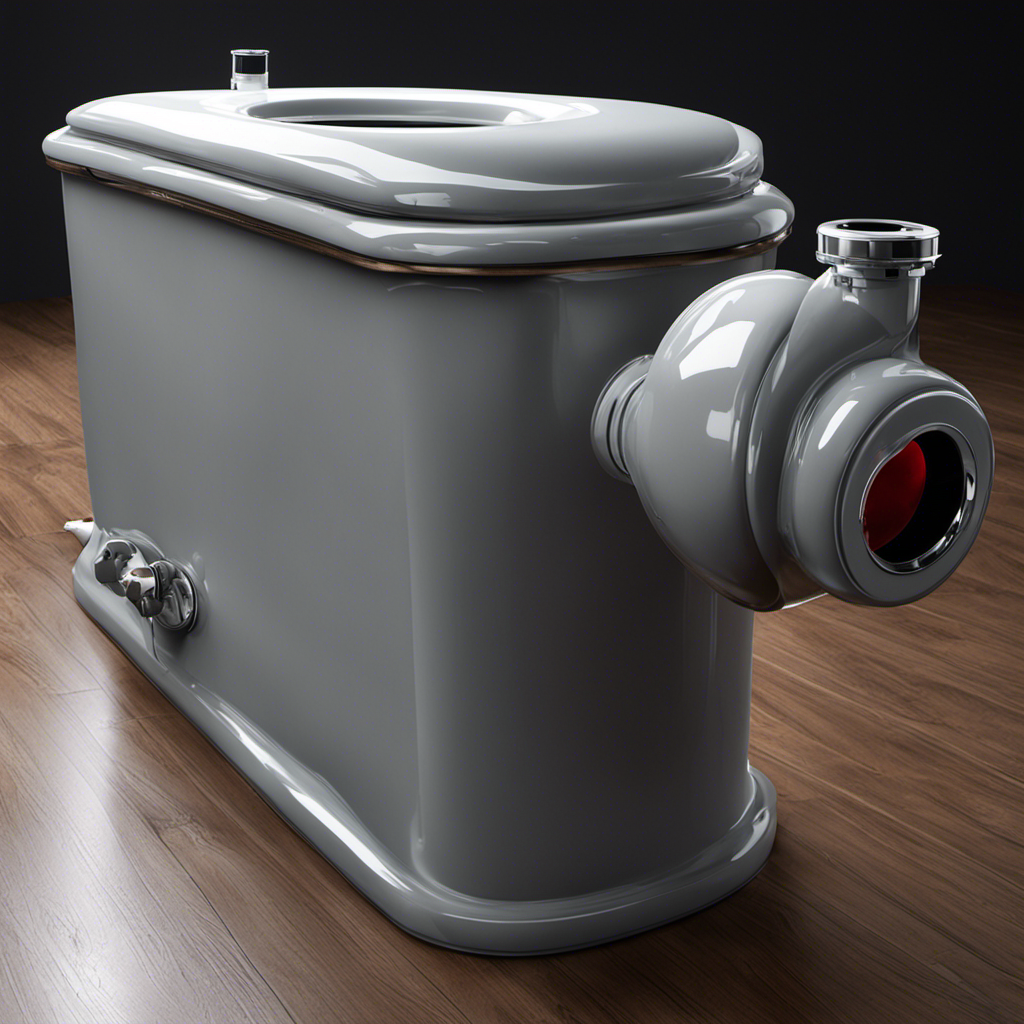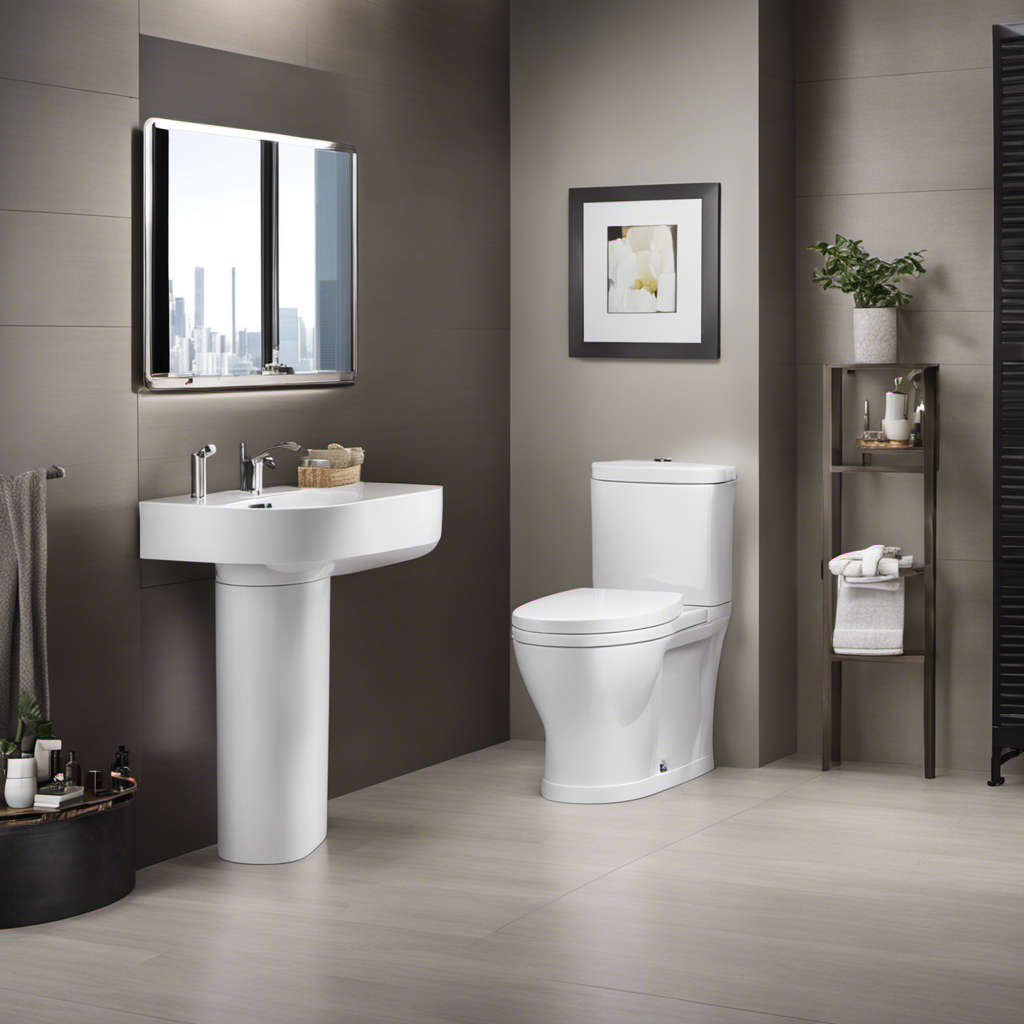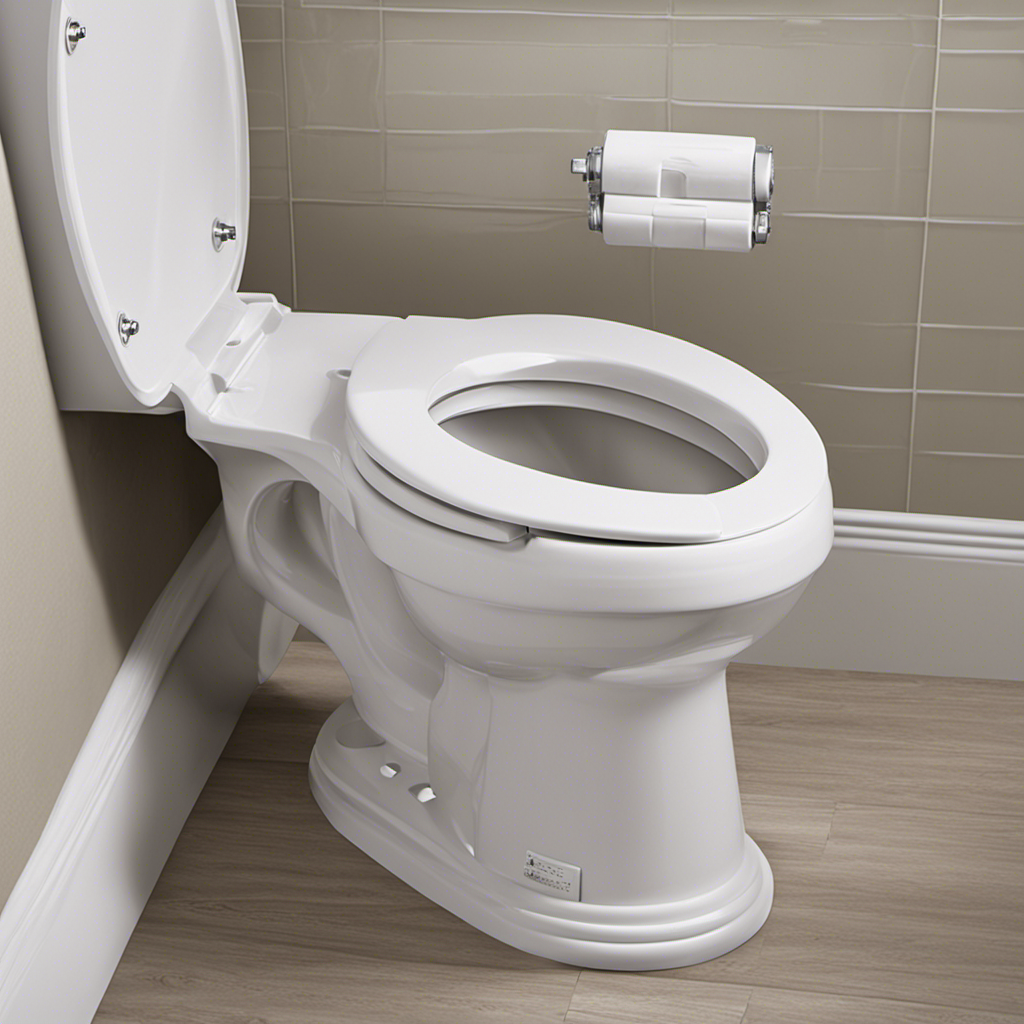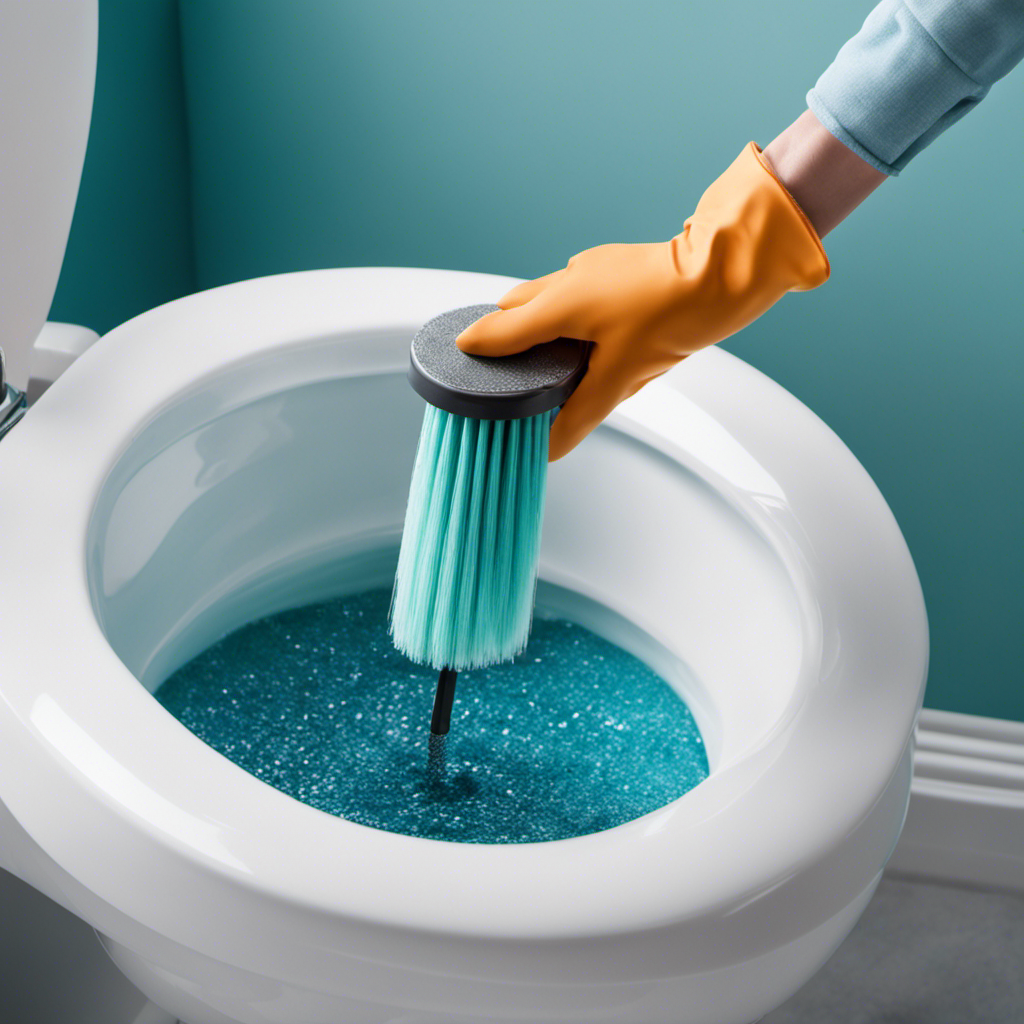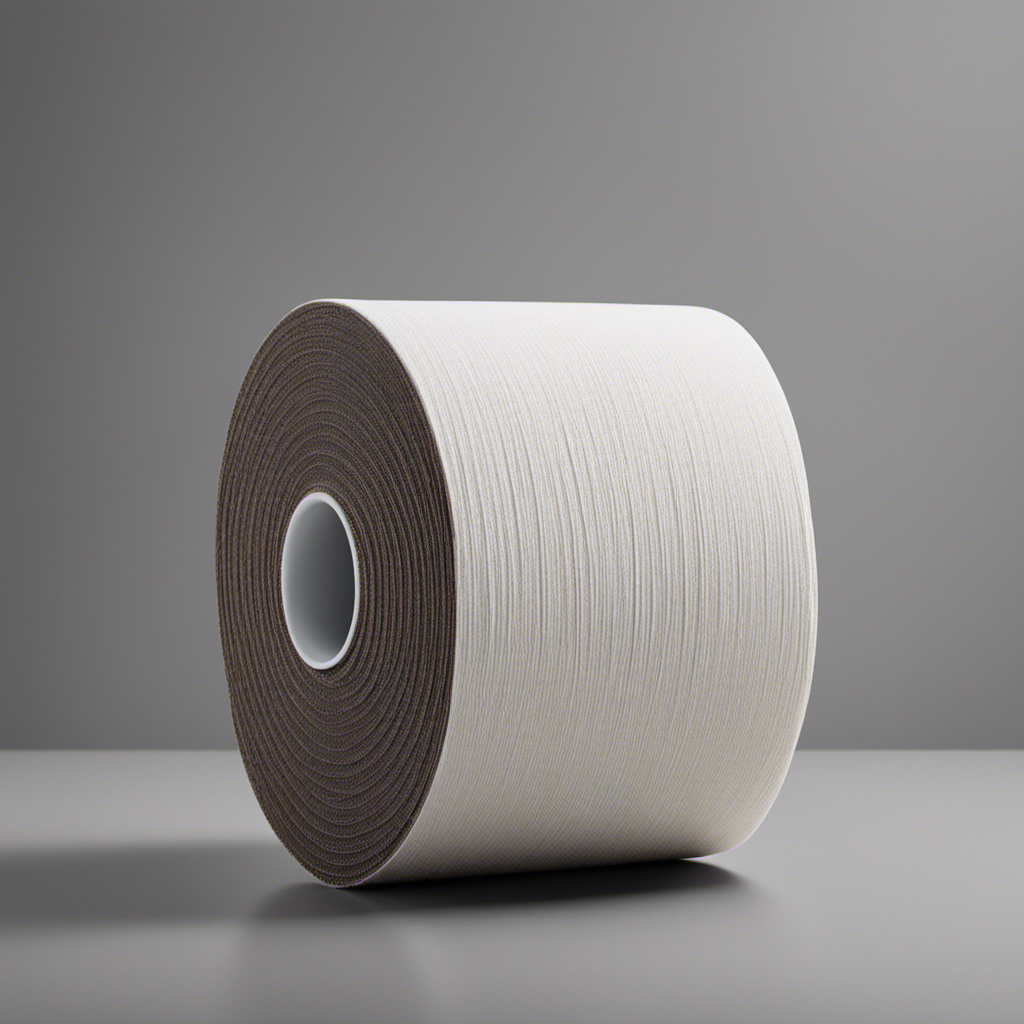Did you know that a toilet not filling up with water is a common plumbing issue that many homeowners face? If you’re experiencing this problem, you’re in the right place.
In this article, I’ll guide you through the common causes of a toilet not filling up with water and provide you with practical solutions. From a blocked water supply line to a malfunctioning fill valve, we’ll explore the technical issues that could be affecting your toilet’s water flow.
Let’s dive in and get your toilet back to its normal functioning state.
Key Takeaways
- A faulty fill valve or a crack in the toilet tank can cause water leakage and prevent the tank from filling up properly.
- A cracked toilet bowl can also lead to water leakage and hinder the tank from filling properly.
- A blocked water supply line or low water pressure can affect the flow of water into the tank and result in a weak or no flush.
- Troubleshooting and seeking professional help are important steps in identifying and resolving toilet filling issues.
Common Causes of a Toilet Not Filling up With Water
One common cause of your toilet not filling up with water is a faulty fill valve. The fill valve is responsible for controlling the flow of water into the toilet tank. If it is not functioning properly, it can prevent the tank from filling up.
Another possible cause could be toilet tank leakage. If there is a crack or a faulty seal in the tank, water may leak out rather than filling up the tank.
Additionally, a toilet bowl crack can also lead to a lack of water filling. Cracks in the bowl can cause water to leak out, preventing the tank from filling properly.
It is important to identify and address these issues promptly to ensure proper functioning of your toilet.
Blocked Water Supply Line
I’ve encountered many cases where a toilet doesn’t fill up with water due to a clogged supply pipe. This is often caused by debris or mineral buildup that restricts the flow of water.
Another common issue is a faulty shut-off valve, which can prevent water from entering the toilet tank.
Lastly, low water pressure can also be a culprit, as it may not provide enough force to fill up the toilet properly.
Understanding these key points will help diagnose and resolve the problem effectively.
Clogged Supply Pipe
The most likely reason for your toilet not filling up with water is a clogged supply pipe. When the supply pipe is clogged, water cannot flow into the toilet bowl, causing it to remain empty. This can lead to a range of issues, such as a clogged toilet bowl and an overflowing toilet tank.
A clogged supply pipe can occur due to various reasons, including mineral deposits, debris buildup, or a blockage in the plumbing system. To resolve this issue, it is important to first shut off the water supply and then inspect and clear the clogged supply pipe. By doing so, you can ensure that water flows freely into the toilet bowl, preventing further problems with the toilet’s functionality.
Moving on to the next possible cause, a faulty shut-off valve…
Faulty Shut-Off Valve
If the shut-off valve is faulty, it can prevent the water from flowing into the toilet bowl. The shut-off valve is a crucial component in the toilet’s water supply system. It is responsible for controlling the flow of water into the tank and ultimately into the bowl. When the shut-off valve malfunctions, it can lead to a lack of water in the toilet, causing it not to fill up properly. Repairing a faulty shut-off valve is relatively straightforward and can be done by following a few steps. Troubleshooting the water flow issue starts with inspecting the shut-off valve for any visible signs of damage or blockage. If necessary, the valve can be replaced to restore proper water flow.
| Potential Causes | Troubleshooting Tips |
|---|---|
| Faulty shut-off valve | Inspect valve for damage or blockage. Replace if necessary. |
| Clogged supply line | Check for any obstructions and clear if needed. |
| Malfunctioning fill valve | Adjust or replace the fill valve to ensure proper water flow. |
Now, let’s move on to the next potential cause of a toilet not filling up with water: low water pressure.
Low Water Pressure
Low water pressure can affect the proper functioning of the toilet’s fill valve. When the water pressure is low, the fill valve may not receive enough water to properly fill up the toilet tank. This can lead to a weak flush or even no flush at all.
To troubleshoot low water pressure, there are a few steps you can take. First, check the water pressure in your home by using a pressure gauge. If the pressure is below the recommended level, you may need to contact your water provider to improve the water pressure.
Additionally, you can check for any leaks or obstructions in your plumbing system that may be causing the low pressure. By identifying and addressing these issues, you can ensure proper water flow to your toilet and improve its functionality.
Faulty Fill Valve
I’ve identified three key points that could be causing issues with the toilet’s fill valve:
-
A clogged water supply: When the water supply line is clogged, it restricts the flow of water into the tank, resulting in a slow or non-existent fill.
-
A broken float mechanism: A broken float mechanism can prevent the fill valve from properly functioning. The float may not rise or fall to signal the valve to open or close.
-
A valve shut-off issue: A valve shut-off issue can occur if the valve is not opening fully or if it is stuck in the closed position. This prevents water from entering the tank altogether.
These three issues can all lead to problems with the toilet’s fill valve.
Clogged Water Supply
Check if the water supply to your toilet is clogged. This is a common issue that can prevent the tank from filling up properly.
To troubleshoot this problem, follow these steps:
-
Check the shut-off valve: Make sure the valve is fully open. If it’s partially closed, it can restrict the water flow to the toilet.
-
Inspect the supply line: Look for any kinks or blockages in the supply line. A kinked or clogged line can restrict water flow.
-
Check the water pressure: Low water pressure can cause the toilet to fill up slowly or not at all. Test the water pressure in your home to ensure it’s within the recommended range.
-
Clean the fill valve: Sediment or debris can accumulate in the fill valve, causing it to malfunction. Clean the valve to ensure proper water flow.
Broken Float Mechanism
To fix a broken float mechanism, make sure the arm is properly attached to the valve. The float mechanism is responsible for regulating the water level in your toilet tank. If it is broken, your toilet may not fill up with water properly.
Start by checking if the arm is securely connected to the valve. If it is loose or detached, reattach it using a screwdriver or wrench.
If the arm is intact but the float is damaged, you may need to replace the float altogether. Alternatively, you can try adjusting the float level by bending the arm slightly. However, this is only a temporary solution and may not fix the underlying issue.
It is recommended to replace a broken float mechanism for optimal performance.
Valve Shut-Off Issue
In my experience as a plumbing expert, I have come across many cases where the toilet fails to fill up with water due to a valve shut-off issue. This can be frustrating, but fortunately, it is a problem that can be resolved with some basic valve maintenance and troubleshooting.
Here are a few things to consider:
- Check if the water supply valve is fully open.
- Inspect the fill valve for any blockages or debris.
- Ensure that the float arm is properly adjusted to the correct height.
- Test the valve by manually lifting the float to see if the water starts flowing.
By following these steps, you can often identify and fix the valve shut-off issue, allowing your toilet to fill up with water properly.
However, if the problem persists, it may indicate a malfunctioning float or float arm, which we will discuss in the next section.
Malfunctioning Float or Float Arm
If your toilet’s not filling up with water, it might be due to a malfunctioning float or float arm.
The float and float arm are essential components in the toilet tank that control the water level. When the float arm is damaged or incorrectly adjusted, it can prevent the tank from refilling properly.
To troubleshoot float issues, start by checking the float arm for any signs of damage or misalignment. If the float arm is bent or broken, it will need to be replaced.
Ensure that the float arm is properly attached to the fill valve and moves freely without any obstructions. Adjust the float arm’s position if necessary to achieve the correct water level.
Properly maintaining and replacing the float arm can help resolve toilet filling issues.
Clogged or Damaged Toilet Flapper
When it comes to troubleshooting a toilet that isn’t filling up with water, another common culprit is a clogged or damaged toilet flapper. The toilet flapper is a rubber valve that sits at the bottom of the tank and controls the flow of water from the tank into the bowl. If the flapper is clogged or damaged, it can prevent water from flowing properly and cause your toilet to not fill up.
Toilet flapper repair may be necessary if you’re experiencing this issue. Here are a few things to consider:
- Check for debris: Inspect the flapper for any debris or mineral buildup that may be causing it to get stuck.
- Adjust the chain: Ensure that the chain connecting the flapper to the flush handle is properly adjusted. If it’s too tight or too loose, it can affect the flapper’s performance.
- Replace the flapper: If the flapper is damaged or worn out, it may need to be replaced with a new one.
- Seek professional help: If you’re unsure about how to troubleshoot or repair the toilet flapper, it’s always best to consult a professional plumber for assistance.
Issues With the Toilet Tank Water Level
To address issues with the toilet tank water level, you should check the float valve to ensure it is functioning properly. The float valve is responsible for regulating the water level in the tank. If it is not working correctly, it can lead to a variety of problems, such as a toilet that doesn’t fill up with water or one that constantly runs. Troubleshooting toilet tank issues can be a bit technical, but it’s essential to maintain a properly functioning toilet. Here are some common problems and their potential solutions:
| Problem | Solution |
|---|---|
| Toilet tank leaks | Check for cracks or damage in the tank, replace any faulty parts |
| Constantly running toilet | Adjust the float valve or replace it if necessary |
| Insufficient water in the tank | Check the float valve and adjust it to allow more water into the tank |
Conclusion
In conclusion, a toilet not filling up with water can be caused by a variety of factors.
It is important to check the water supply line for any blockages and ensure that the fill valve is functioning correctly.
Additionally, a malfunctioning float or float arm may need to be replaced.
Another potential issue could be a clogged or damaged toilet flapper.
Lastly, problems with the toilet tank water level can also lead to insufficient water flow.
For example, in a recent case study, a homeowner discovered that their toilet flapper was worn out and needed to be replaced, resulting in a restored water flow.
Remember to regularly maintain and inspect your toilet to avoid any disruptions in its function.
